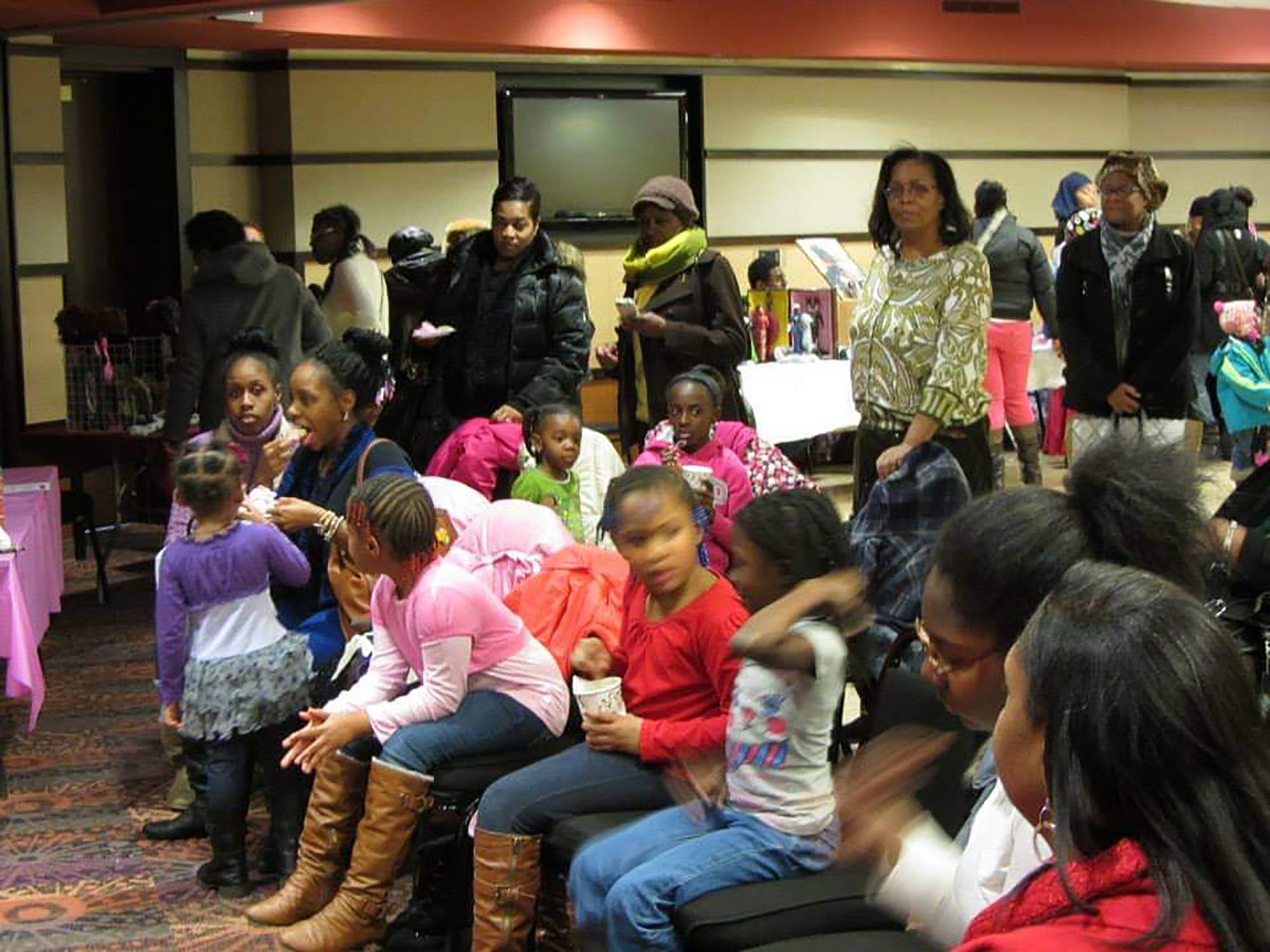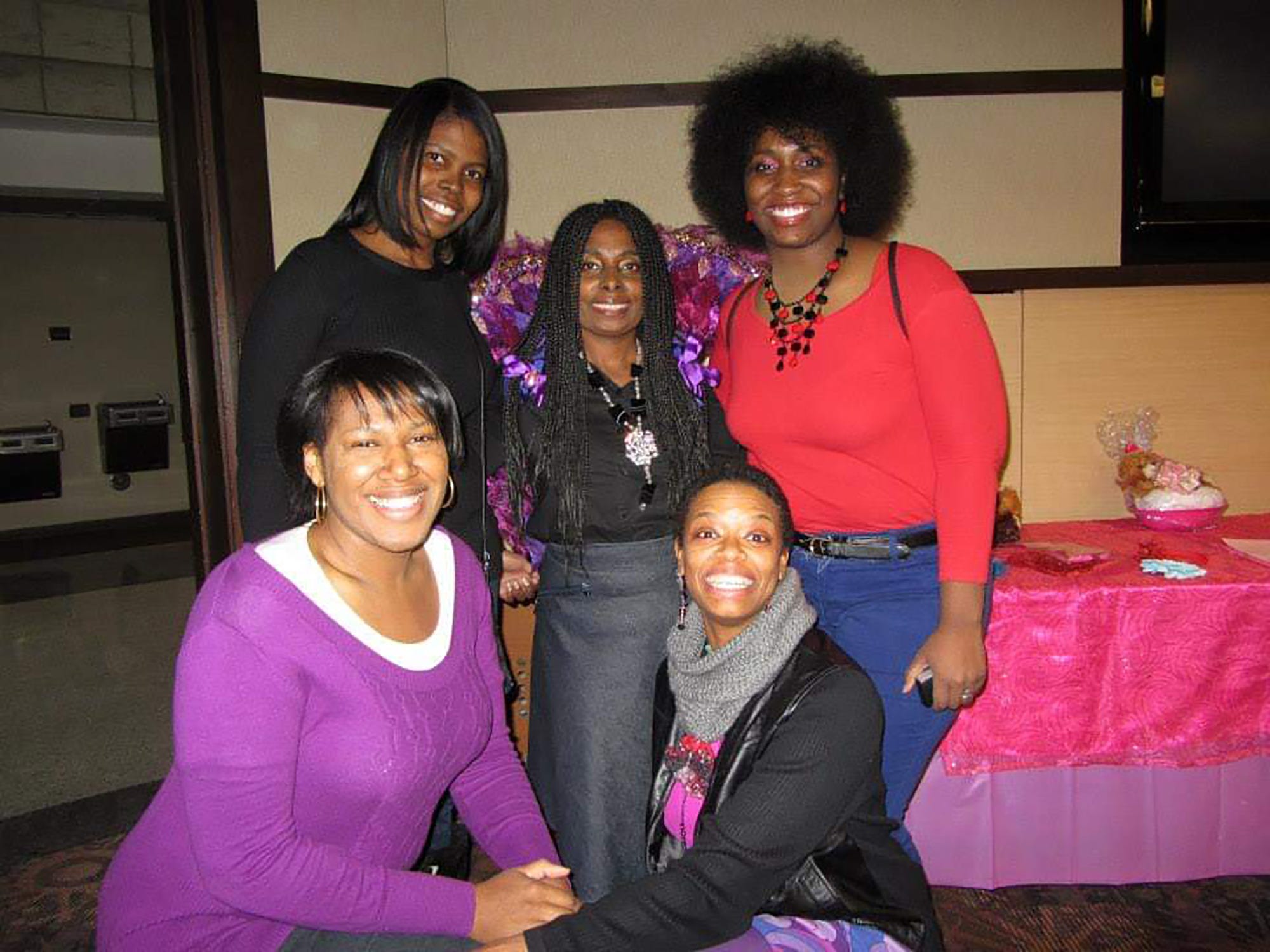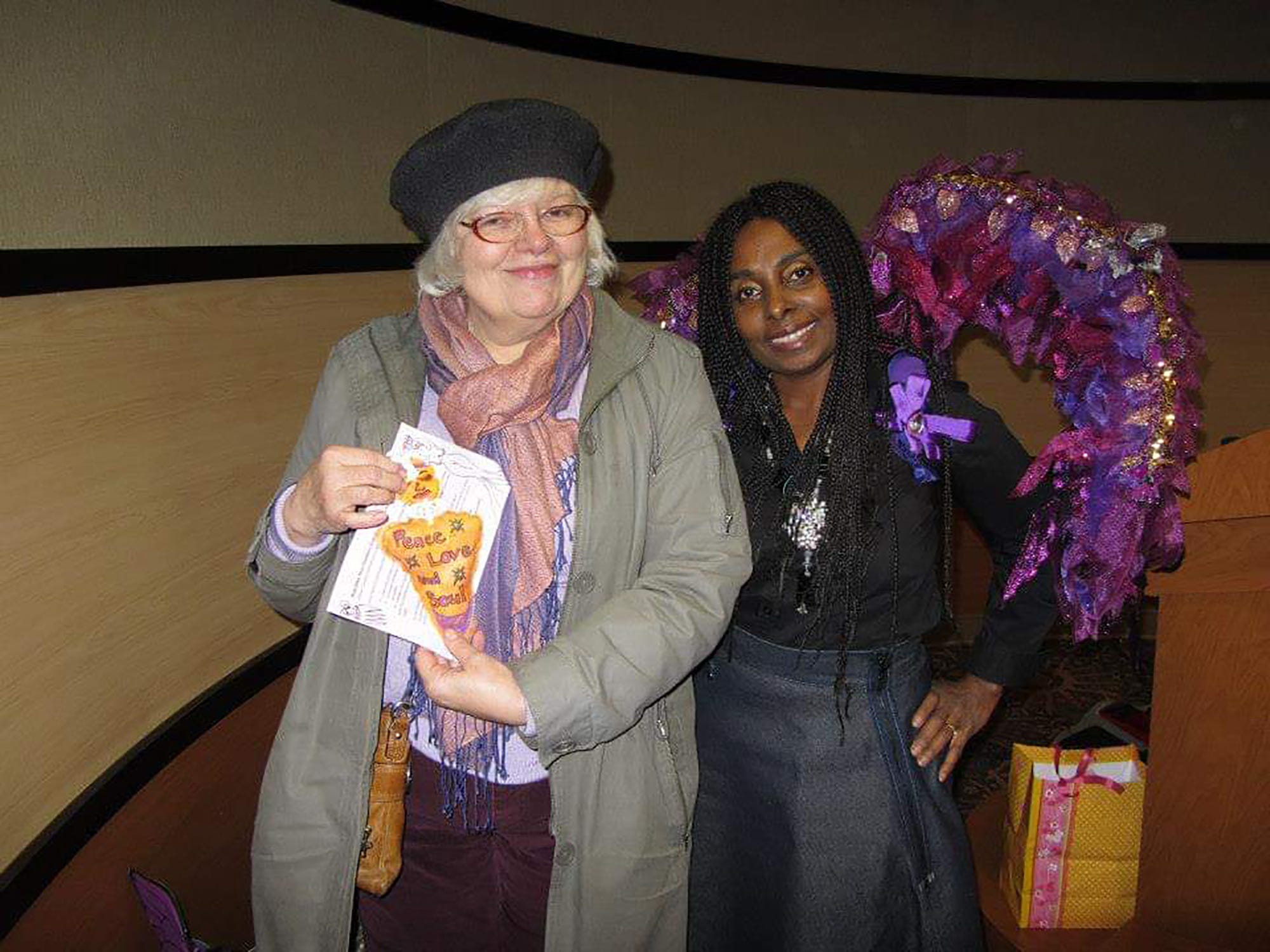Detroit Doll Show returns at Marygrove Conservancy
Even when spending time in her beloved butterfly garden at her northwest Detroit home, dolls are still very much on the mind of Sandra Epps, founder of the Detroit Doll Show. After a two-year absence, the event which Epps calls “a celebration of history, culture, self-love and diversity” will return Saturday, Nov. 12 at the Marygrove Conservancy.
Provided by Sandra Epps
If Sandra Epps had it her way, it would be spring all the time — because spring is when she most enjoys the butterfly garden in front of her home on Pinehurst Street near the Northwest Activities Center.
However, on Tuesday, the native Detroiter wasn’t talking about spring butterflies, or even Michigan autumns, which she also likes. Instead, from her home, she told a story about a winter day in Detroit nearly a decade ago that continues to guide her path today.
“I was driving a Ford F-150 and the snow covered up my tires,” Epps said, describing the state of her truck on Saturday, Dec. 14, 2013, as it was parked on the street near the Charles H. Wright Museum of African American History in Midtown.
On that day, the National Weather Service reported that up to 8 inches of snow had fallen in parts of Wayne County. But of even magnitude greater than the weather to much of the world, at that moment in time, were the events taking place across the globe that celebrated the life of former South African President and apartheid fighter Nelson Mandela following his death on Dec. 5 of that year. Still, Epps, the pride of La Salle Gardens, Thirkell Elementary-Middle School and Northwestern High School (Class of 1989), would soon discover that the event she was presenting that afternoon at the Wright Museum — the second annual Detroit Doll Show — had special meaning to people here, as well.
“The weather was so bad that they started shutting stuff down in the city. But folks showed up (for the Doll Show), they still showed up,” Epps recalled, choking up with tears in her eyes as she spoke. “My show was being held downstairs in classrooms at the museum and there was a tribute to Nelson Mandela upstairs. But more people (about 100) showed up for my show. We had people who had caught the bus to come; a couple of people said they had been in accidents or spinouts, and they still made it. There was something magical about that show, and right then I knew it was something that I couldn’t give up.”
 Images from the 2013 Detroit Doll Show during the snow storm. On Dec 14, 2013, the National Weather Service reported that up to 8 inches of snow had fallen in parts of Wayne County, but that was not enough to stop about 100 people from showing up to the Charles H. Wright Museum of African American for what was then the second annual Detroit Doll Show. After a two-year absence due to COVID, the event billed as “the largest Black doll show in the nation” returns Nov. 12 at the Marygrove Conservancy.
Images from the 2013 Detroit Doll Show during the snow storm. On Dec 14, 2013, the National Weather Service reported that up to 8 inches of snow had fallen in parts of Wayne County, but that was not enough to stop about 100 people from showing up to the Charles H. Wright Museum of African American for what was then the second annual Detroit Doll Show. After a two-year absence due to COVID, the event billed as “the largest Black doll show in the nation” returns Nov. 12 at the Marygrove Conservancy.
Provided by Sandra Epps
True to her words, Epps has not given up on the event, which she bills as “the largest Black doll show in the nation.” And after going on hiatus for two years (2020 and 2021) due to the COVID-19 pandemic, the Detroit Doll Show will make its return Nov. 12 at the Marygrove Conservancy. Epps is hoping for nice weather that day, but more than that, she said she wants to recapture the “magic” that brought people out to the Wright Museum in 2013 on a level that goes deeper than material value of the hundreds of dolls and related items that she expects to be on display.
More:‘Torch’ carrier Bethany Howard has burning desire to serve in Detroit
More:‘Daughter of Detroit’ continues to teach and help any way she can
“Dolls are not just toys, but they’re also teaching tools,” explained Epps. She cited Mattel’s recently released Madam CJ Walker doll that honors the African American trailblazer, who is often called the “first self-made millionaire businesswoman in the United States,” as an example of the type of inspirational pieces that will be featured at her event . “My mission has been to help women and girls love themselves. And before COVID, we were touching more than just women and girls, because we had fathers bringing their daughters and grandfathers bringing granddaughters. And we’ve also seen more than just Black families, so it’s truly doll play and learning going on for all ages and all people.”
But before the play and learning takes place on that Saturday in November, Epps says she has much work to do.
“When COVID hit in 2020, I was devastated. I thought life was over. And with the two-year absence, it almost feels like I’m doing this for the first time,” Epps said, describing her sleepless nights and not feeling her best while attending to details that will go unseen by most attendees. “Challenges help us grow, but during the process it hurts like crap.”
 Images from the 2013 Detroit Doll Show during the snow storm. On Dec 14, 2013, the National Weather Service reported that up to 8 inches of snow had fallen in parts of Wayne County, but that was not enough to stop about 100 people from showing up to the Charles H. Wright Museum of African American for what was then the second annual Detroit Doll Show. After a two-year absence due to COVID, the event billed as “the largest Black doll show in the nation” returns Nov. 12 at the Marygrove Conservancy.
Images from the 2013 Detroit Doll Show during the snow storm. On Dec 14, 2013, the National Weather Service reported that up to 8 inches of snow had fallen in parts of Wayne County, but that was not enough to stop about 100 people from showing up to the Charles H. Wright Museum of African American for what was then the second annual Detroit Doll Show. After a two-year absence due to COVID, the event billed as “the largest Black doll show in the nation” returns Nov. 12 at the Marygrove Conservancy.
Provided by Sandra Epps
Epps’ word choice is telling because a significant chunk of her life has been about challenges and literally feeling like ‘crap.” Even before she completed her middle school years at Thirkell, Epps, who at one time took pride in being able to outrun all of the girls and boys in her neighborhood, had to deal with barely being able to move any part of her body at all What at first was a mystery ailment was finally diagnosed as systemic lupus erythematosus (SLE), an autoimmune disease in which the immune system attacks its own tissues, causing widespread inflammation and tissue damage in the affected organs.
“The best way I can describe lupus is that it’s like your body is fighting against itself,” Epps said. And she went on to say that the fight caused the once fleet runner to suddenly gain weight (up to about 200 pounds, while standing 4 feet, 11 inches), as she lost her hair and self-esteem in the process. Extended hospital stays and heavy pill intakes also followed, until finally Epps began to take control of her fight when she made up her mind to “go in hard to heal myself and get off everything” in her late 20s. Her determination was in large part fueled by her desire to become the first in her family to graduate from college, which she did in 2001, earning a bachelor’s in fine arts from Wayne State University.
“That sheer determination to graduate from college gave me something to hold on to instead of what the doctors were telling me,” said Epps, who points to reading affirmations and positive books, along with learning comedy, as game-changers in restoring her health . “It was a lonely journey, but it turned out to be a blessing in disguise because I discovered what I wanted to do with my life; it’s all about empowerment.
“My hair was my pride and joy — it went down past my shoulders — and when I lost it, I thought I was different and I didn’t want to be around my friends anymore and that’s a feeling that I never wanted my nieces or any other girls to feel. At the show we’re going to have things like a mobile Blackmuseum and there will be Black artists — all positive representations of people of color — and I want girls to see and embrace themselves exactly the way they are through those images.”
 Images from the 2013 Detroit Doll Show during the snow storm. On Dec 14, 2013, the National Weather Service reported that up to 8 inches of snow had fallen in parts of Wayne County, but that was not enough to stop about 100 people from showing up to the Charles H. Wright Museum of African American for what was then the second annual Detroit Doll Show. After a two-year absence due to COVID, the event billed as “the largest Black doll show in the nation” returns Nov. 12 at the Marygrove Conservancy.
Images from the 2013 Detroit Doll Show during the snow storm. On Dec 14, 2013, the National Weather Service reported that up to 8 inches of snow had fallen in parts of Wayne County, but that was not enough to stop about 100 people from showing up to the Charles H. Wright Museum of African American for what was then the second annual Detroit Doll Show. After a two-year absence due to COVID, the event billed as “the largest Black doll show in the nation” returns Nov. 12 at the Marygrove Conservancy.
Provided by Sandra Epps
The Nov. 12 Detroit Doll Show will be the ninth time Epps has presented the event, which is just four more than the number of inspirational books targeting girls and women that have been written, and in some cases even illustrated, by the multi-talented entrepreneur, who also is the secretary of her Pinehurst Block Club. However, there is a smaller number that Epps focuses on as she prepares for her upcoming show.
“If God spared my life three times from death (during my battle with lupus), I knew I had to do something with my life,” Epps said from home Wednesday. “Nov. 12 will be about representation. There will be dolls representing virtually all states of life, including physical handicaps. Growing up, my first Black doll was Judy and she was my girl. My sister (Cathy) gave her a perm and my mom (Earnestine) made her a couple of outfits. And Judy gave me strength because when I was going through changes, Judy was always there. If girls at my show can find themselves a Judy like I did to help them through their life’s journey, they will be blessed.”
The Detroit Doll Show
When: Saturday, Nov. 12 (11 am – 6 pm)
Where: Marygrove Conservancy, Madame Cadillac Building, 8425 W McNichols, Detroit, 48221
For more information: Please visit www.facebook.com/DetroitDollShow
Scott Talley is a native Detroiter, a proud product of Detroit Public Schools and lifelong lover of Detroit culture in all of its diverse forms. In his second tour with the Free Press, which he grew up reading as a child, he is excited and humbled to cover the city’s neighborhoods and the many interesting people who define its various communities. Contact him at: [email protected] or follow him on Twitter @STalleyfreep. Read more of Scott’s stories at www.freep.com/mosaic/detroit-is/.



Comments are closed.